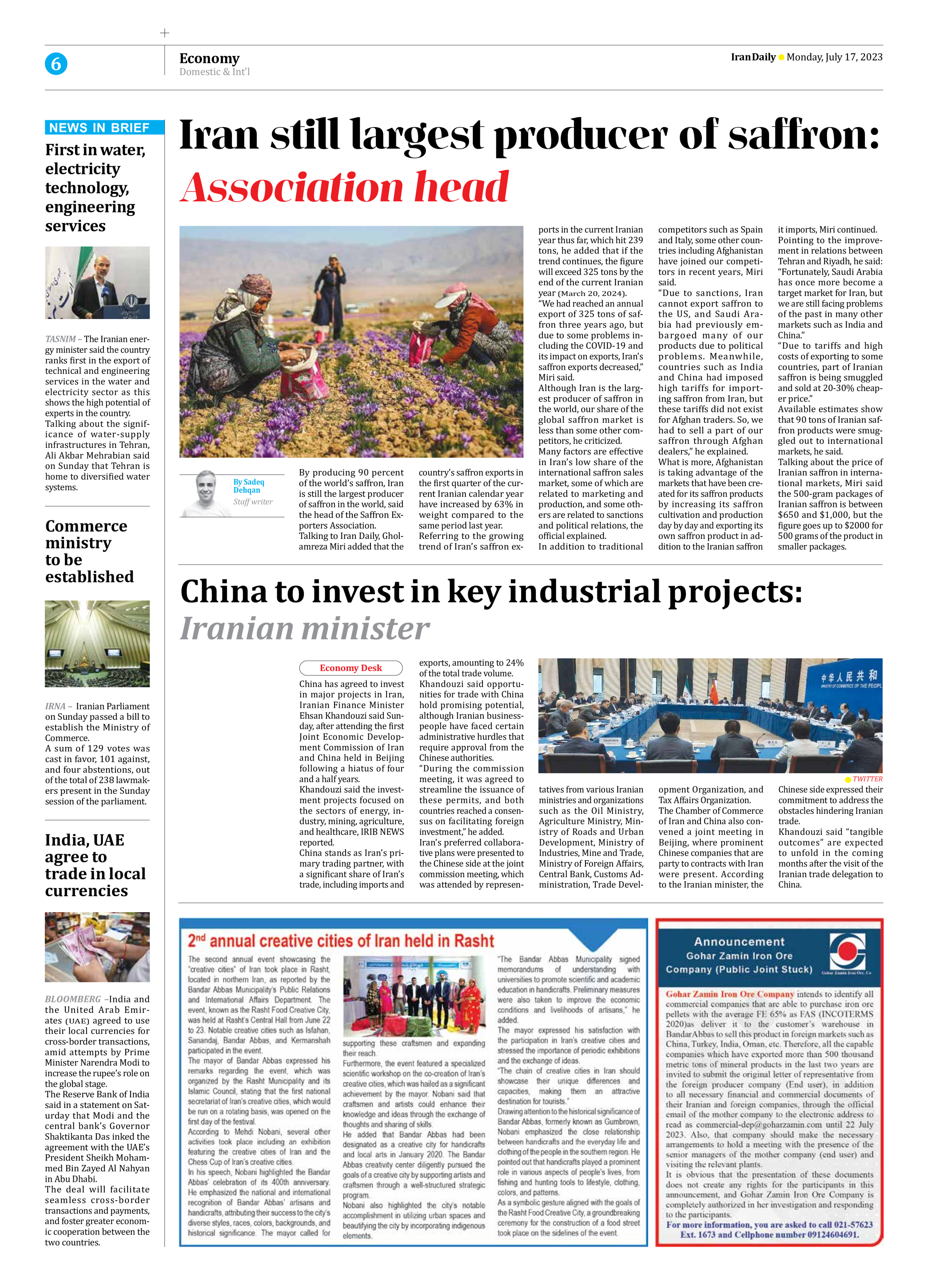
Iran still largest producer of saffron: Association head
By Sadeq Dehqan
Staff writer
By producing 90 percent of the world’s saffron, Iran is still the largest producer of saffron in the world, said the head of the Saffron Exporters Association.
Talking to Iran Daily, Gholamreza Miri added that the country’s saffron exports in the first quarter of the current Iranian calendar year have increased by 63% in weight compared to the same period last year.
Referring to the growing trend of Iran’s saffron exports in the current Iranian year thus far, which hit 239 tons, he added that if the trend continues, the figure will exceed 325 tons by the end of the current Iranian year (March 20, 2024).
“We had reached an annual export of 325 tons of saffron three years ago, but due to some problems including the COVID-19 and its impact on exports, Iran’s saffron exports decreased,” Miri said.
Although Iran is the largest producer of saffron in the world, our share of the global saffron market is less than some other competitors, he criticized.
Many factors are effective in Iran’s low share of the international saffron sales market, some of which are related to marketing and production, and some others are related to sanctions and political relations, the official explained.
In addition to traditional competitors such as Spain and Italy, some other countries including Afghanistan have joined our competitors in recent years, Miri said.
“Due to sanctions, Iran cannot export saffron to the US, and Saudi Arabia had previously embargoed many of our products due to political problems. Meanwhile, countries such as India and China had imposed high tariffs for importing saffron from Iran, but these tariffs did not exist for Afghan traders. So, we had to sell a part of our saffron through Afghan dealers,” he explained.
What is more, Afghanistan is taking advantage of the markets that have been created for its saffron products by increasing its saffron cultivation and production day by day and exporting its own saffron product in addition to the Iranian saffron it imports, Miri continued.
Pointing to the improvement in relations between Tehran and Riyadh, he said: “Fortunately, Saudi Arabia has once more become a target market for Iran, but we are still facing problems of the past in many other markets such as India and China.”
“Due to tariffs and high costs of exporting to some countries, part of Iranian saffron is being smuggled and sold at 20-30% cheaper price.”
Available estimates show that 90 tons of Iranian saffron products were smuggled out to international markets, he said.
Talking about the price of Iranian saffron in international markets, Miri said the 500-gram packages of Iranian saffron is between $650 and $1,000, but the figure goes up to $2000 for 500 grams of the product in smaller packages.







